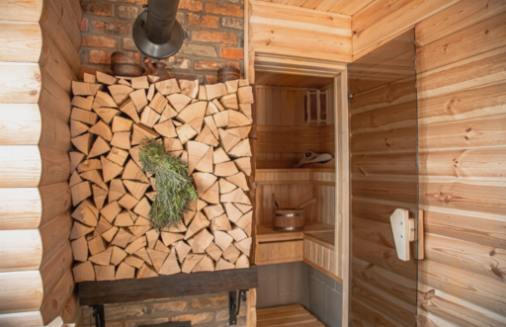In today's world, the push for eco-friendly solutions is more important than ever. This sentiment extends to all aspects of our lives, including how we heat our homes and saunas. Traditional heating methods may have a negative impact on the environment, but there are ways to maximize efficiency and explore renewable energy options for a more sustainable approach. Let's dive into the world of eco-friendly heating solutions for wood-burning saunas.

Tips for Maximizing Efficiency in Wood-Burning Saunas
Wood-burning saunas are a popular choice for those looking for a traditional and natural way to heat their sauna. However, it is important to maximize the efficiency of this heating method in order to reduce waste and ensure a more environmentally friendly sauna experience.
One tip for maximizing efficiency in wood-burning saunas is to use high-quality firewood. Dry, seasoned hardwoods such as oak, maple, or birch burn more efficiently and produce less smoke than softer woods like pine. By using high-quality firewood, you can ensure that your sauna heats up quickly and stays at a consistent temperature.
Another tip is to properly stack and arrange your firewood in the sauna stove. By creating a well-ventilated and organized wood stack, you can promote better airflow and combustion, leading to a more efficient burning process. It is also important to regularly clean out any ash buildup in the stove to ensure proper air circulation and heat distribution.
Additionally, consider insulating your sauna to retain heat and prevent energy loss. Proper insulation will help your sauna heat up faster and stay warm longer, reducing the amount of wood needed to maintain a comfortable temperature. Use materials such as fiberglass or mineral wool insulation to create an energy-efficient sauna space.
Finally, be mindful of how you use your sauna to minimize energy waste. Only heat the sauna when it will be used, and avoid overheating the space unnecessarily. By following these tips for maximizing efficiency in wood-burning saunas, you can enjoy a more sustainable and eco-friendly sauna experience.
Exploring Renewable Energy Options for Sauna Heating
When it comes to sauna heating, there are several renewable energy sources that can be utilized to reduce our carbon footprint and minimize environmental impact.
One popular renewable energy option for sauna heating is solar power. Solar panels can be installed on the roof of the sauna to harness the power of the sun and convert it into energy to heat the sauna. This not only reduces reliance on traditional energy sources but also helps to reduce greenhouse gas emissions.
Another renewable energy option for sauna heating is biomass energy. Biomass energy utilizes organic materials such as wood pellets or logs to generate heat. This is a sustainable option as the organic materials can be replenished through responsible forestry practices.
Geothermal energy is also a viable option for sauna heating. Geothermal heat pumps can be used to extract heat from the ground and transfer it into the sauna. This renewable energy source harnesses the natural heat from the earth's core and can be a cost-effective and eco-friendly option for heating saunas.
In conclusion, exploring renewable energy options for sauna heating is a crucial step towards achieving environmental sustainability in our homes and gardens. By utilizing solar power, biomass energy, geothermal energy, or other renewable energy sources, we can reduce our carbon footprint and contribute to a cleaner and greener planet.
The Environmental Impact of Traditional Sauna Heating Methods
Traditional sauna heating methods, such as using electrical heaters or gas stoves, have a significant environmental impact. Electrical heaters require large amounts of electricity, which is often generated by burning fossil fuels, leading to increased greenhouse gas emissions. Gas stoves also contribute to air pollution and carbon emissions.
Additionally, the production and transportation of the fuel needed for traditional sauna heating methods further adds to their environmental footprint. Wood harvested for burning releases carbon dioxide when burned, contributing to deforestation and habitat destruction.
Overall, the use of traditional sauna heating methods not only depletes natural resources but also contributes to air pollution and climate change. In order to minimize the environmental impact of sauna heating, it is important to explore renewable energy options and maximize the efficiency of wood-burning saunas.
